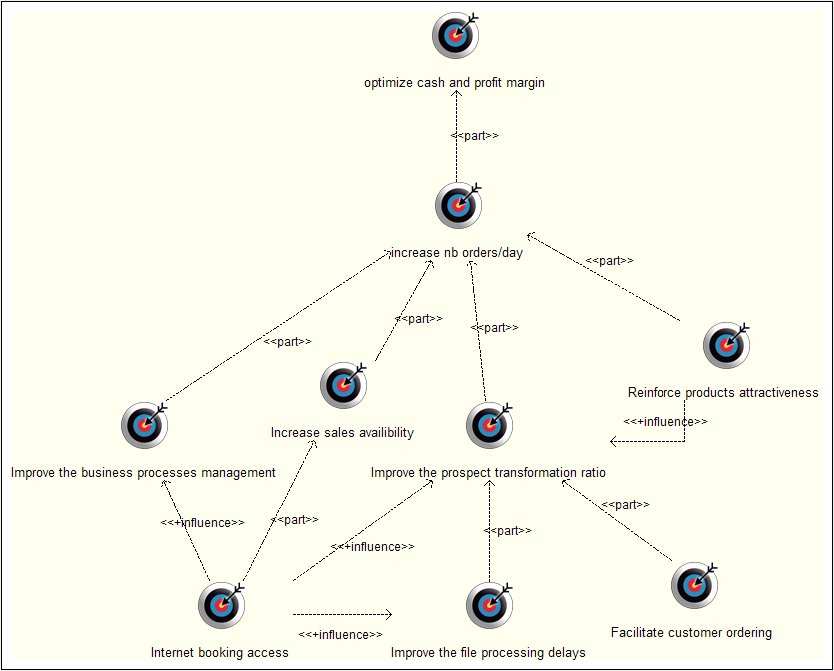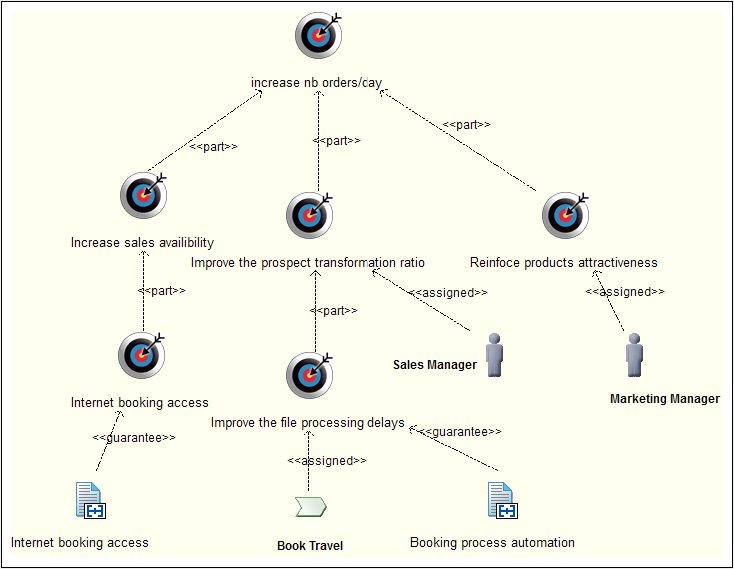Enterprise Architecture tool: Goal modeling diagrams
Examples of Enterprise Architecture goal modeling diagrams with Modelio
Business goals drive enterprise transformation, and justify the evolution of the business architecture and the information system. Modelio supports goal modeling, through dedicated spreadsheet editors and diagrams. Since goals are integrated in the Modelio repository, they can be traced from any other model element, be they requirements, business architecture elements, or technical architecture elements.
Goals are targets for achievement, which provide a framework for the desired system. They are high level objectives of the organization or system, they express the rationale for proposed systems and guide decisions at various levels within the enterprise. Goals are defined by the OMG “BMM” (Business Motivation Metamodel) standard.
Goal diagrams represent goals, their dependencies (part of, refine, negative or positive influence, guarantee, measure, assignment), and their properties. For each goal, it is important to express how and when this goal will be checked, what the concrete success criteria are, and to whom or what the goal (role, organizational unit, process) is assigned (responsibility).
By providing dedicated modeling support, Modelio enables a more formal and complete definition of goals, and provides global traceability support between the whole enterprise architecture model and the enterprise goals and objectives.
The first example diagram represents goal decomposition, part links and additional links such as positive or negative influences between goals.
The second example diagram shows that some goals are assigned to actors of an organization or business processes, and that some requirements ("Booking Process Automation", for example) guarantee that a goal will be met.



